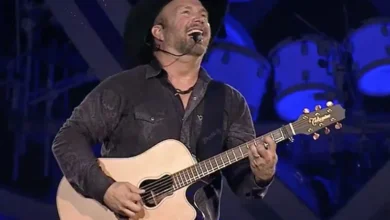Liedtext Somebody That I Used To Know

What is Somebody That I Used to Know?
Liedtext Somebody That I Used To Know: Somebody That I Used to Know is a song by Gotye (Wally De Backer), featuring Kimbra, released in 2011 as part of Gotye’s third studio album Making Mirrors.
It became a global hit: topping charts in many countries, winning major awards (including Grammy Awards), and achieving multi-platinum certifications.
Musically, it’s an art pop / alternative rock ballad, built around a sample from Luiz Bonfá’s “Seville,” and features a memorable melody, sparse instrumentation in parts, and vocal interplay between the male narrator (Gotye) and female voice (Kimbra).
Lyrics & Structure: Voices & Perspectives
One of the defining features of Somebody That I Used to Know is its dual narrative structure: Gotye’s voice (male) begins by reflecting on the breakup, the emotional aftermath, and confusion. Later, Kimbra’s voice enters to offer the ex-partner’s perspective, pushing back on some of the male narrator’s assumptions.
This two-part structure gives the song depth: instead of being one-sided self-pity, it becomes more of a conversation (or confrontation) where both sides are exposed, both feel hurt or misunderstood. The shift in voice emphasizes true emotional complexity.
In terms of layout, the song progresses roughly as:
-
Opening verse (Gotye): Recollections, questioning, loneliness.
-
Chorus: The male narrator reacting strongly to being “cut off,” treated like nothing.
-
Kimbra’s answer part: Revisiting wrongs, miscommunications.
-
Final chorus / closing: Reinforcing that after the breakup, the person becomes “just somebody I used to know”.
The contrast between memory vs. reality, what was promised vs. what happened, and feelings vs. understanding is central to the lyrical flow.
Major Themes & Emotional Messages
Several themes make this song especially resonant. Here are key ones:
Breakup & Loss
The core theme is the end of a relationship: not necessarily a dramatic or explosive breakup, but one that lingers. The lyrics are about looking back on what was, what went wrong, and how it feels when someone you once were close to becomes distant.
Fragmented Memory & Blame
The song explores how in many relationships there are mutual misunderstandings, unspoken expectations, and feelings of blame. Lines like “you said that you could let it go… but I’d catch you hung up on somebody that you used to know” show that promises may have been made but not kept.
Alienation & Identity After Relationship
Part of the pain in the song comes from feeling erased, or like one’s identity is altered by the breakup: treated like a stranger, or like the relationship never meant much. The idea of being “just somebody I used to know” speaks to that sense of loss — of self, of place, of significance.
Communication, Silence & Cut-Off
A lot of the emotional tension comes from lack of closure, from being “cut off,” from changes in communication that feel disrespectful or cold. The chorus emphasizes this: “But you didn’t have to cut me off… make out like it never happened…” shows the hurt of being entirely disregarded.
Nostalgia and the ache that remains
Even in bitterness or frustration, there’s nostalgia: remembering good times, feeling that ache, the mixed emotions of what used to be versus what is now. The song balances anger with sadness and longing.
Musical & Production Aspects That Amplify the Lyrics
The lyrics are powerful, but the music, production, and arrangement play a big role in making the emotional impact stronger.
Sampling and Instrumentation: The song uses a sample from Luiz Bonfá’s “Seville,” combined with clean percussion, subtle flute or melodic lines, and a generally sparse arrangement in the verses. This gives space for the words and emotion.
Dynamics & Build-Up: Verses are relatively restrained; the choruses are more emotionally intense. The song gradually swells, both in vocal intensity and in musical texture, to match the lyrical content. When the narrator feels more strongly (anger, betrayal), the music responds.
Vocal Contrast: Gotye’s voice often sounds more introspective, wistful, hurt; Kimbra’s enters with a more direct, clarifying, sometimes challenging tone. This contrast gives weight to both sides and prevents the song from feeling one-dimensional.
Melodic hooks & memorability: The chorus is catchy — “But you didn’t have to cut me off…” is easily memorable; the melody lines are simple enough but emotionally resonant. That helps explain its commercial success.
Visual component: Though this is beyond just lyrics, the music video’s use of body painting, nudity, and visual metaphor of merging into then separating from background paintings reinforces the lyric’s message about closeness, blending, identity, and separation.
Cultural Impact & Success
Why has Somebody That I Used to Know connected so strongly with so many people? Here are some reasons:
-
It topped charts globally: Australia, UK, USA, etc. It became one of the defining songs of 2011-2012.
-
It won major awards, including Grammys for Record of the Year and Best Pop Duo/Group Performance.
-
It resonated because its emotional content is universally relatable: many have experienced heartbreak, miscommunication, feeling treated like someone unimportant after being close. The song’s lyrics are specific but ambiguous enough to allow listeners to insert their own stories. Gotye himself said the song was drawn from multiple past relationships.
-
It has been covered many times, used in television, movies, memes, different performances, increasing its reach and embedding it in popular culture.
Criticisms, Interpretations & Why Some Feel Discomfort
While Somebody That I Used to Know is celebrated, it also invites critique and deeper interpretation, especially around its portrayal of blame and gender dynamics.
- Some interpretations view the male narrator’s voice as self-absorbed, focused more on how he was hurt, rather than acknowledging equally what she might have done. Kimbra’s entry in the song challenges that, but some listeners feel the chorus overshadows the rebuttal.
- Feminist critiques suggest the song reflects a cultural pattern where men expect some form of closure or ongoing contact even after the relationship ends, and feel slighted when the ex moves on or “cuts them off.”
- The idea of nostalgia in painful form: some feel the song romanticizes or idealizes the past, even while acknowledging betrayal or hurt. The tension between remembering something as “good” and seeing how it ended badly is emotionally messy.
- Others note that the song doesn’t (and perhaps can’t) offer clear solutions or healing. It’s a song of reflection and pain, not reconciliation. That can be cathartic, but also leaves the listener with unresolved feelings.
Why the Song’s Lyrics Resonate & What We Can Learn
Many people connect with Somebody That I Used to Know because of how it balances raw emotion and reflection. Here are some takeaways from its lyrics:
Honesty about Mixed Feelings
The song acknowledges that after a breakup, one can feel hurt, nostalgic, angry, sad—and sometimes those feelings conflict. Admitting that it “felt so lonely in your company” even when “you said you felt so happy” captures that paradox.
Perspective Matters
By giving both voices (Gotye’s and Kimbra’s), the song emphasizes that breakups are rarely one-sided in how people experience them. Understanding the ex-partner’s viewpoint doesn’t erase the hurt, but it adds complexity.
Closure Isn’t Always Clean
The idea that someone might want a clean break, but emotionally, messiness remains, is central. The lyrics show there was no perfect closure: memories, feelings, regret linger.
Importance of Respect After Separation
The chorus complains that the ex made things worse by cutting off, acting like the past didn’t matter. This speaks to how post-breakup behavior (communication changes, coldness, silence) shapes how one moves on.
Shared Humanity of Pain
Ultimately, although the song is personal, it taps into a shared human experience. So many people can relate to being treated like someone from a past life, someone changed, someone less central.
Conclusion
Gotye’s Somebody That I Used to Know is more than a breakup song—it’s a careful, emotionally potent narrative about love, loss, memory, and the messy ways relationships end. Its lyrics, paired with powerful musical production and strong emotional contrast (both between voices and perspectives), create a piece that many find deeply relatable.
The power of its message lies in its balance: not purely blame, not purely nostalgia, but the mess in between. For listeners, it offers reflection, empathy, perhaps a bit of healing simply by saying out loud the confusion and heartache that follow ending something important.




